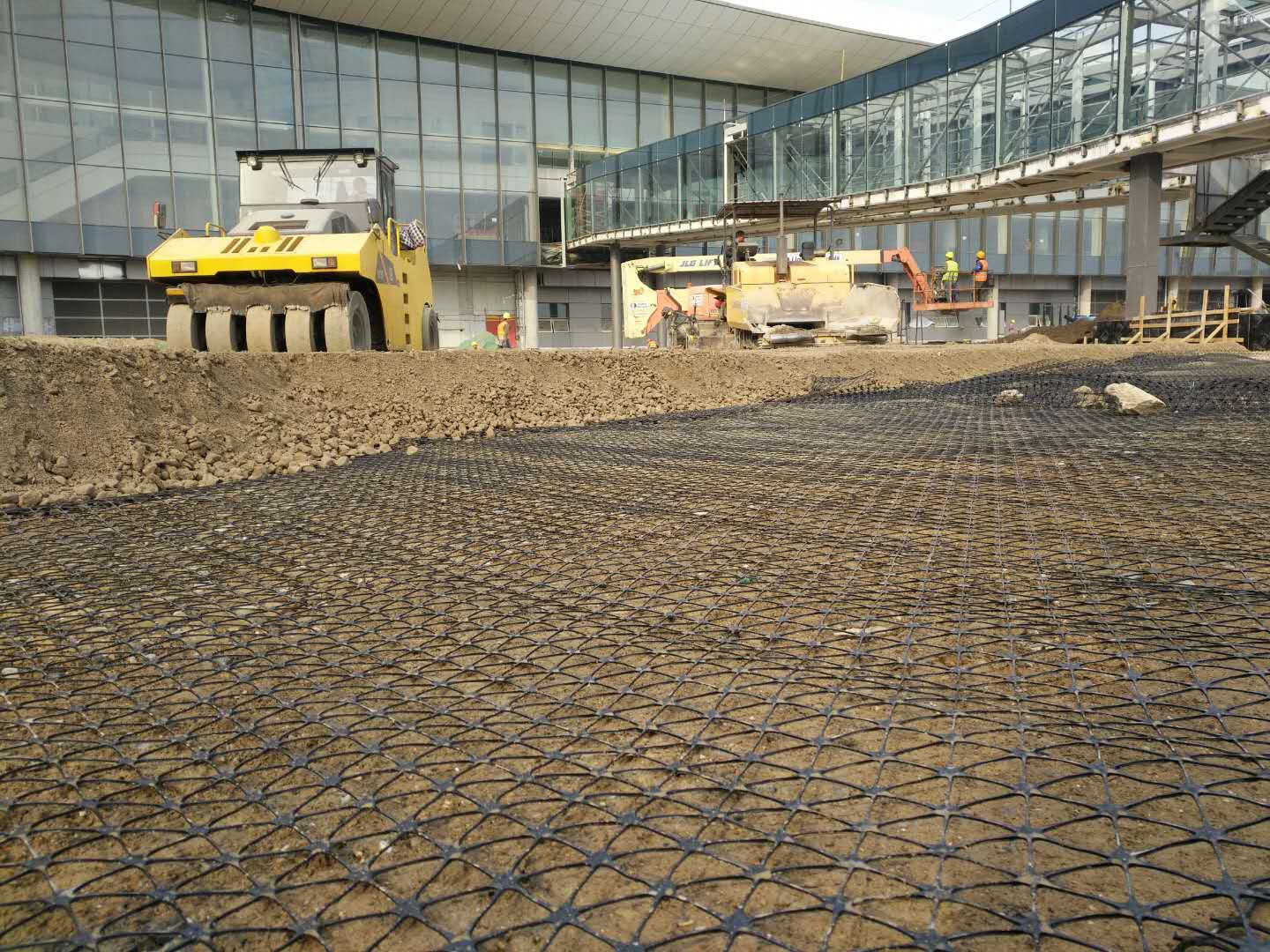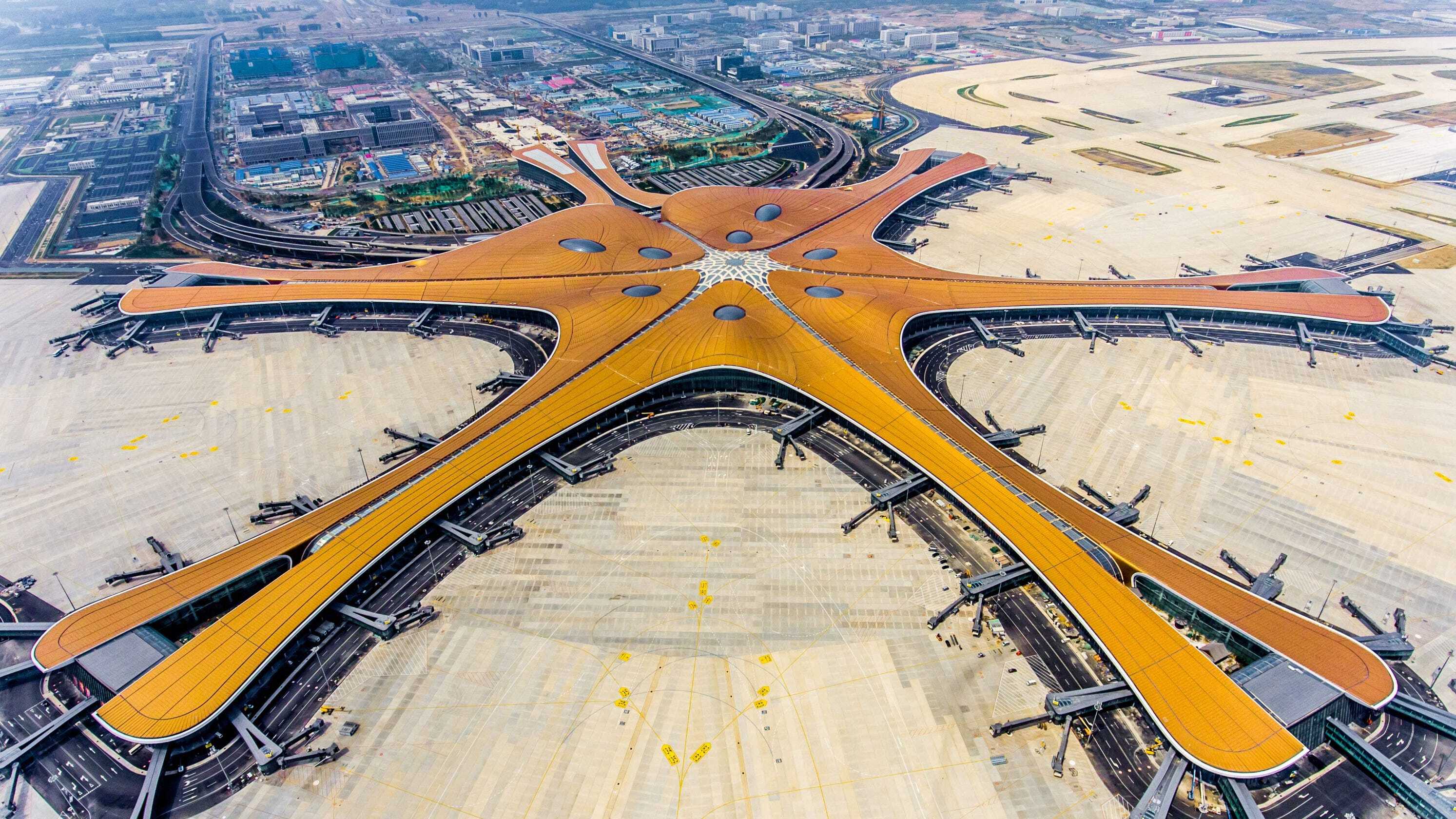The geotechnics of airport infrastructure
by Jonathan Cook, on January 20, 2022
The challenge of airport infrastructure
One key feature of all airports is obviously the very large total area made up of various differing pavements. There are two important factors which impact the airport pavement design and are key to appropriate infrastructure choices. Firstly, pavement loading is most severe where aircraft are stationary, taxiing slowly, or stopping – not, as might be expected, when landing (at which stage, fuel consumption can make an aircraft considerably lighter). Secondly, aircraft wheel loads are up to ten times greater than highway wheel loads, so the correct infrastructure – including thicker pavements - to support these elements is essential.
Using the optimum surface for the airport
Pavement areas can be flexible or rigid construction and many airports use a combination of flexible runway pavements with rigid aprons and taxiways. A flexible surface’s key benefit is a smooth surface for comfortable transport. However with the high wheel load, taxiing on this type of surface can cause deformations such as hollows, making it of optimum use where aircraft are in continuous motion - such as a runway – rather than areas where they may be required to stop. The rigid pavement construction is used for aprons and parking areas. All pavement types incorporate a granular subbase or base layer and stabilising the granular layer with geogrid can increase the strength of the layer and reduce deformation under load.
In this episode of "Ask Andrew", Andrew Lees visits Hartsfield-Jackson Atlanta International Airport to tell us about geotechnics in airports.
The benefits of geogrids in airports
As with highway infrastructure, when included as part of a full pavement design the inclusion of a stabilisation geogrid within airport pavements can enable a reduction in the volume of granular material required. In addition, when a suitable geogrid is laid directly over weaker subgrade soils, compaction of the bottom layers of granular material is improved, further enhancing pavement performance, extending its life and reducing maintenance requirements, thus saving costs and reducing carbon footprint.
Sustainability beyond the runway
Non-airside pavements, such as perimeter roads and car parking areas, may also take advantage of stabilised base layers to reduce pavement thickness, the cost of materials and associated construction carbon emissions. As in all construction projects, sustainable objectives such as these are now an essential aspect of every airport design. Elsewhere within airports, mechanically stabilised earth structures incorporating geogrid reinforcement are often used to construct steep slopes for grade separation and environmental sound barriers.

Installation of Tensar geogrids helped to mitigate differential settlement at the biggest airport in the world, Daxing International Airport.
Imitation is the sincerest form of flattery
When Beijing Daxing International Airport opened in late 2019, there was universal praise for the stunning terminal building conceived by British architect Zaha Hadid. Breathtakingly beautiful inside, the external structure has a distinctive plan comprising six stems radiating out from a central hub. Engineers at Tensar’s offices in China were quick to notice that the geometry of the building closely resembles the structure of Tensar’s TriAx geogrid, where six ribs radiate from each node to form a repeating hexagonal structure with triangular apertures. This is a happy coincidence, because the taxiways and aprons of Daxing airport are stabilised with Tensar TriAx geogrid!

China's huge 'starfish' Daxing International Airport opened in September 2019. The geometry of the building closely resembles Tensar TriAx geogrid - see below.
(Photo credit: AFP Getty Images)

Beijing Daxing airport's infrastructure
Beijing Daxing airport uses rigid pavements throughout, and utilising geogrids to stabilise the subbase layer was a precaution against potential differential settlement over the multiple service trenches, pipes and culverts located beneath the pavements.
To read more about this project, click here to download the project profile.
Tensar geogrid has also been used to overcome similar problems at other airports in China, including stabilisation below runways at Chengdu Tianfu International Airport in Sichuan. Another example of Tensar’s products offering stabilisation along with increased safety and long-term sustainability.



.jpg?width=400&height=400&ext=.jpg)